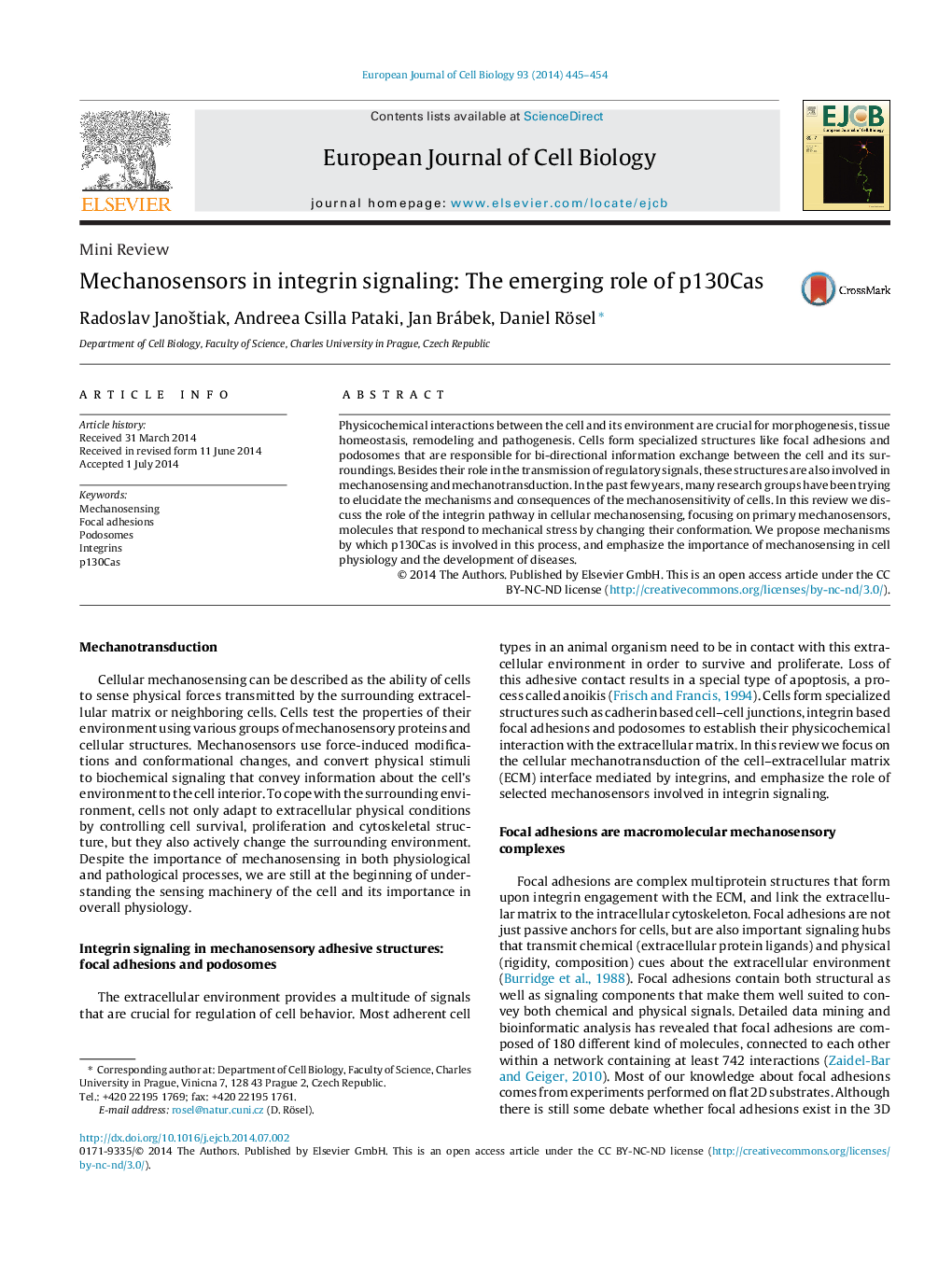| Article ID | Journal | Published Year | Pages | File Type |
|---|---|---|---|---|
| 8469932 | European Journal of Cell Biology | 2014 | 10 Pages |
Abstract
Physicochemical interactions between the cell and its environment are crucial for morphogenesis, tissue homeostasis, remodeling and pathogenesis. Cells form specialized structures like focal adhesions and podosomes that are responsible for bi-directional information exchange between the cell and its surroundings. Besides their role in the transmission of regulatory signals, these structures are also involved in mechanosensing and mechanotransduction. In the past few years, many research groups have been trying to elucidate the mechanisms and consequences of the mechanosensitivity of cells. In this review we discuss the role of the integrin pathway in cellular mechanosensing, focusing on primary mechanosensors, molecules that respond to mechanical stress by changing their conformation. We propose mechanisms by which p130Cas is involved in this process, and emphasize the importance of mechanosensing in cell physiology and the development of diseases.
Related Topics
Life Sciences
Agricultural and Biological Sciences
Plant Science
Authors
Radoslav JanoÅ¡tiak, Andreea Csilla Pataki, Jan Brábek, Daniel Rösel,
